THE CAD DRAFTER
The term drafter commonly refers to a man or woman who is employed in the drafting profession. Other general-purpose titles include draftsperson, design drafter, drafting technician, engineering drafter, CADD operator, and CADD technician. A job title can also be discipline or task specific. For example, a cad drafter who works for a civil engineering firm is a civil drafter, civil engineering drafter, construction drafter, or civil CADD technician. Several industries and most engineering and architectural related fields require drafters.
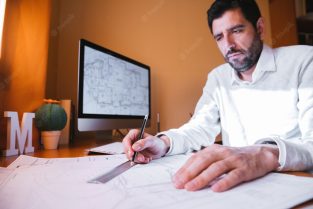
According to the Australian Department of Labor, most drafters work in the following industries:
- Professional, scientific, and technical services.
- Manufacturing
- Construction
- Administrative and support services.
Drafters prepare technical drawings and plans used by production and construction workers to build everything from microchips to skyscrapers. Drafters’ drawings provide visual guidelines and show how to construct a product or structure. Drawings include technical details and specify dimensions, materials, and procedures. Drafters fill in technical details using drawings, rough sketches, specifications, and calculations made by engineers, surveyors, architects, or scientists. For example, many drafters use their knowledge of standardized building techniques to draw Notice edit the details of structures.
Most drafters use CADD systems to prepare drawings. Accordingly, some drafters may be referred to as CADD operators. With CADD systems, drafters can create and store drawings electronically so that they can be viewed, printed, or programmed directly into automated manufacturing systems. CADD systems also permit drafters to prepare variations of a design quickly. Although drafters use CADD extensively, they still need knowledge of traditional drafting techniques in order to fully understand and explain concepts. Some use their understanding of engineering and manufacturing theory and standards to draw the parts of a machine; they determine design elements, such as the numbers and kinds of fasteners needed to assemble the machine. Drafters use technical handbooks, tables, calculators, and computers to complete their work.
DRAFTING FIELDS
Drafting is a broad occupation. There are many drafting fields and several drafting or related occupations within each fi eld. The most common drafting fields include architecture, civil and electrical engineering, electronics, mechanical engineering, and industrial process-pipe drafting.
Drafting, in general, has one basic description, but specific drafting areas have unique conceptual and skill characteristics. Drafters perform general duties described under the title of drafter in all drafting disciplines. Most drafters rely on knowledge of engineering or architectural principles, mathematical formulas, physical laws, and manufacturing or construction processes and limitations.
Drafters typically work from analyzes, standards, specifi cations, sketches, engineering drawings, models, prototypes, verbal instructions, ideas, and related design data. Drafters then perform discipline and project specific tasks that require certain knowledge and skill. For example, an automotive design drafter requires knowledge of automotive vehicle design and manufacturing.
Drafters often create a variety of drawings even though they may be employed in a certain fi eld or focus on a specific product. For example, an architectural drafter may be involved in preparing structural, electrical, plumbing, and civil drawings.
A mechanical drafter may participate in simulation and analysis studies and create electronic drawings and technical illustrations. Drafters often work with a team, individuals of the same discipline, and others related to a specific project. For example, architectural drafters typically work with architects, architectural designers, and related architecture, engineering, and construction professionals.
Aeronautical Cad Drafter
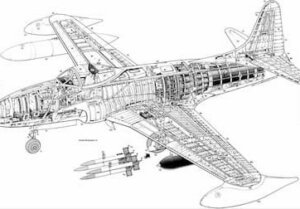
Architectural Cad Drafter
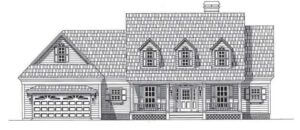
Automotive Design Cad Drafter
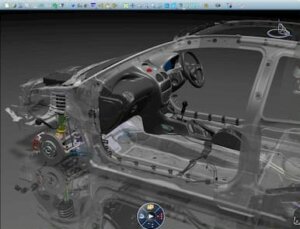
Casting, Forging, and Mold Cad Drafter

Civil Cad Drafter
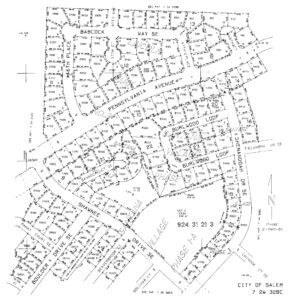
Civil drafters prepare detailed drawings of structures and installations, such as roads, culverts, fresh-water supplies, sewage-disposal systems, dikes, wharves, and breakwaters.
Civil drafters also compute the volume of the tonnage of excavations and fills and prepare graphs and hauling diagrams used in earthmoving operations. Civil drafters may accompany survey crew in field to locate grading markers or to collect data required for revision of construction drawings. A topographical drafter is a civil drafter who specializes in drafting and modifying topographical maps from surveying notes and aerial photographs.
Cartographic Cad Drafter
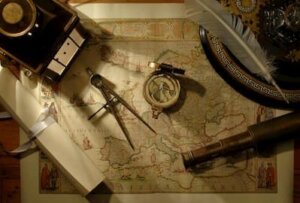
Commercial Cad Drafter
Commercial drafting is a specialization of architectural drafting. A commercial drafter, also known as a facilities drafter, is responsible for laying out the location of buildings, planning the arrangements of offices, large rooms, store buildings, and factories, and drawing charts, forms, and records. A commercial drafter may also create 3-D rendered models.
Directional Survey Cad Drafter
Direction survey drafting is a specialization of civil drafting. Directional survey drafters plot oil- or gas-well boreholes from photographic subsurface survey recordings and other data. Directional survey drafters compute and represent diameter, depth, degree, and direction of inclination, location of equipment, and other dimensions and characteristics of boreholes.
Electrical Cad Drafter
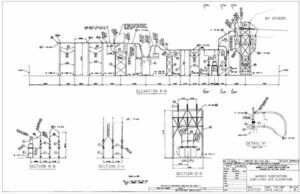
Electronic Cad Drafter

Geological Cad Drafter
Geological drafters draw maps, diagrams, profiles, cross-sections, directional surveys, and subsurface formations to represent geological or geophysical stratigraphy and locations of gas and oil deposits. Geological drafters correlate and interpret data obtained from topographical surveys, well logs, and geophysical prospecting reports and use special symbols to denote geological and geophysical formations or oil field installations.
Geophysical Cad Drafter
Geophysical drafters draw subsurface contours in rock formations from data obtained by geophysical prospecting. Geophysical drafters plot maps and diagrams from computations based on recordings of seismographs, gravity meters, magnetometers, and other petroleum-prospecting instruments and from prospecting and surveying field notes. Geophysical drafters some- times receive a title such as a seismograph drafter, according to a specific method of prospecting.
Heating, Ventilating, and Air-Conditioning Cad Drafter
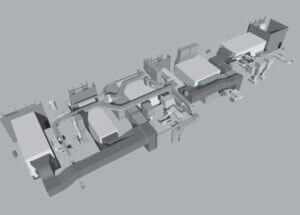
A refrigeration drafter specializes in drawing plans for the installation of refrigeration equipment. A detail drafter, or detailer, works for an HVAC contractor developing 3-D models, detailed shop and installation drawings, performing trade-to-trade coordination to a finished degree and developing fabrication cut sheets. Detailers can also be involved in download to or input into a sheet metal fabrication software program.
Industrial Process-Pipe Cad Drafter
An industrial process-pipe drafter-also known as an industrial pipe drafter, a piping drafter, and a pipeline drafter– prepares CADD models and drawings used in the layout, construction, and operation of oil and gas fields, refineries, chemical plants, and process piping systems.
Industrial process-pipe drafters develop detail drawings for the construction of equipment and structures, such as drilling derricks, compressor stations, and gasoline plants; frame, steel, and masonry buildings; piping manifolds and pipeline systems; and for the manufacture, fabrication, and assembly of machines and machine parts.
Industrial process-pipe drafters prepare maps to represent geological stratigraphy, pipeline systems, and oil and gas locations, using field survey notes, geological and geophysical prospecting data, and aerial photographs.
An oil and gas drafter is an industrial process-pipe drafter who specializes in oil and gas industrial pipe drafting.
Landscape Cad Drafter
Landscape drafters prepare CADD models and drawings from rough sketches or other data provided by landscape architects. Landscape drafters may prepare separate detailed site plans, grading and drainage plans, lighting plans, paving plans, irrigation plans, planting plans, and drawings and details of garden structures. Landscape drafters may build models of proposed landscape construction and prepare coloured drawings for presentation to clients.
Mechanical Cad Drafter

In general, mechanical drafting is the core of the engineering drafting industry. The terms engineering drawing and engineering drafting used throughout all drafting disciplines.
A mechanical drafter, also known as an engineering drafter, is a drafter associated with mechanical drafting for the manufacturing industry.
Mechanical drafters create CADD models and drawings of machinery and mechanical devices, indicating dimensions and tolerances, fastening and joining methods, and other engineering data and requirements. Mechanical drafters draw multiple-view part, assembly, subassembly, and layout drawings as required for manufacture and repair of machines and equipment. The figure shows an example of a part drawing.
Marine Cad Drafter
Marine drafting is a specialization of mechanical and structural drafting. Marine drafters develop CADD models and drawings of structural and mechanical features of ships, docks, and other marine structures and equipment.
Patent Cad Drafter
Patent drafters prepare clear and accurate drawings of varied sorts of mechanical devices for use of a patent lawyer in obtaining patent rights. The “Patents” section toward the end of this chapter provides additional information on patents and patent drawings.
Photogrammetrist
Photogrammetrists analyze source data and prepare mosaic prints, contour-map profi le sheets, and related cartographic materials that require technical mastery of photogrammetric techniques and principles.
Photogrammetrists prepare original maps, charts, and drawings from aerial photographs and survey data and apply standard mathematical formulas and photogrammetric techniques to identify, scale, and orient geodetic points, estimations, and other planimetric or topographic features and cartographic detail.
Photogrammetrists graphically represent aerial photographic detail, such as contour points, hydrography, topography, and cultural features, using precision stereo plotting apparatus or drafting instruments.
Photogrammetrists revise existing maps and charts and correct maps in various states of compilation. Photogrammetrists also prepare rubber, plastic, or plaster 3-D relief models.
Plumbing Cad Drafter
A plumbing drafter, also known as a pipe drafter, specializes in CADD models and drawings for installing plumbing and piping equipment in residential, commercial, and industrial settings. Commercial and industrial piping relate closely to industrial process-pipe drafting.
Structural Cad Drafter

A detail drafter, or detailer, works for a structural contractor developing 3-D models, detailed shop drawings, and installation drawings, performing trade-to-trade coordination to a finished degree, and developing fabrication drawings. Detailers may also be involved in downloading to or inputting into a structural component fabrication software.
Technical Illustrator
Technical illustrators layout and draw illustrations for reproduction in reference works, brochures, and technical manuals dealing with assembly, installation, operation, maintenance, and repair of machines, tools, and equipment.
Technical illustrators prepare drawings from blueprints, design mockups, and photographs by methods and techniques suited to specified reproduction process or final use, photo-offset, and projection transparencies, using drafting and optical equipment.
Technical illustrators create schematic, perspective, axonometric, orthographic, and oblique-angle views to depict functions, relationships, and assembly sequences of parts and assemblies such as gears, engines, and instruments.
Technical illustrators also create rendered drawings and 3-D models, and they may draw cartoons and caricatures to illustrate operation, maintenance, and safety manuals and posters.
Tool-and-Die Design Cad Drafter
Tool-and-die design drafting is a specialization of mechanical drafting. Tool-and-die design drafters prepare CADD models and detailed drawing plans for manufacturing tools, usually following designs and specifications indicated by tool designers.
EDUCATION AND QUALIFICATIONS
The design and drafting profession can provide a rewarding career for people who enjoy detailed work and have a mechanical aptitude and ability to visualize. Math and communication skills are also important. The following information describes education and qualification requirements for an entry-level drafting position.
High school courses in mathematics, science, computer technology, design, computer graphics, and drafting are useful for people considering a drafting career. However, employers in the drafting industry prefer applicants who have at least two years of postsecondary training in a drafting program that provides strong technical skills and considerable experience with CADD systems.
Employers are most interested in applicants with a strong background in fundamental drafting principles;well-developed drafting skills; knowledge of drafting standards, mathematics, science, and engineering technology; a solid background in CADD techniques; and the ability to apply their knowledge to a broader range of responsibilities. Future students should contact prospective employers to ask which schools they prefer and contact schools to ask for information about the kinds of jobs their graduates have, the type and condition of instructional facilities and equipment available, and teacher qualifications.
Many technical institutes, community colleges, and some four-year colleges and universities offer drafting programs. Technical institutes offer intensive technical training, but they provide a less general education than do community colleges Technical institutes may award either certificates or diplomas and programs can vary considerably in length and in the types of courses offered.
Many technical institutes offer two-year associate degree programs. Community colleges offer programs similar to those in technical institutes but include more classes in drafting theory and also often require general education classes. After completing a two-year associate degree program, graduates may obtain jobs as drafters or continue their education in a related field at a four-year college. Most four-year colleges do not offer training in drafting, but they do offer classes in engineering, architecture, and mathematics that are useful for obtaining a job as a drafter. Technical training obtained in the armed forces can also apply in civilian drafting jobs. Some additional training may be necessary, depending on the technical area or military specialty.
Mechanical drafting-the type of drafting done for the manufacturing industry-offers the fundamental standards involved in the design and drafting profession. However, there are a variety of design and drafting discipline categories. Training differs somewhat within the drafting specialties, although the basics, such as mathematics, are similar. In an electronics drafting program, for example, students learn how to show electronic components and circuits in drawings. In architectural drafting, students learn the technical specifi cations of buildings.
Some educational programs provide training in specifi c disciplines, whereas others provide diversifi ed training in several areas. The opportunity to experience more than one discipline allows you to find an industry that you prefer.
General Qualifications and Certification
Mechanical ability and visual aptitude are important for drafters. Prospective drafters should be able to perform detailed work accurately. Artistic ability is helpful in some specialized fields, as is knowledge of manufacturing and construction methods. In addition, future drafters should have good interpersonal skills because they work closely with engineers, surveyors, architects, and other professionals and sometimes with customers.
Advancement
Opportunities for advancement for drafters are excellent, although dependent on the advancement possibilities of a specific employer. Advancement also depends on your skill, initiative, ability, product knowledge, attitude, ability to communicate, continued education, and enthusiasm.
Entry-level or junior drafters usually do routine work under close supervision. After gaining experience, drafters may become intermediate drafters and progress to more difficult work with less supervision. At the intermediate level, drafters may need to exercise more judgment and perform calculations when preparing and modifying drawings. Drafters may eventually advance to senior drafter, designer, or supervisor.
An entry-level drafting position may not be in your chosen field, but you should be able to find employment in your desired area with experience and an open job market. Opportunities are available that allow people to expand career potential into related areas such as tool design and cartography. Many people who enter the drafting industry begin to move up quickly into the design, checking, purchasing, estimating, and management.
Many employers pay for continuing education. Additional education for advancement usually includes increased levels of mathematics, pre-engineering, engineering, software, and advanced drafting. Appropriate college degrees may allow drafters to go on to become engineering technicians, engineers, or architects. Drafting has traditionally been an excellent way of designing, engineering, and management.
DRAFTING JOB OPPORTUNITIES
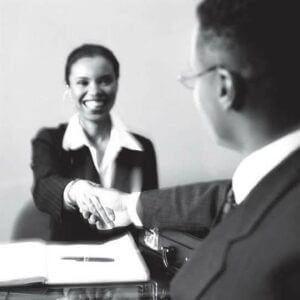
A slowdown or speedup in construction and manufacturing nationally affects the number of drafting jobs available. The economic effect on drafting job opportunities also occurs at the local level or with specific industries. For example, construction may be strong in one part of the country and slow in another, so the demand for drafters in those localities is strong or slow accordingly.
Fewer drafters are required when large manufacturers, such as automobiles, experience poor sales. More drafters are required when industries such as high-tech expand. In addition, a growing number of drafters should continue to find employment on a temporary or contract basis as more companies turn to the employment services industry to meet their changing needs.
Local demands also generally control the types of drafting jobs available. Each local area usually has a need for more of one type of drafting skill than another. In general, metropolitan areas where manufacturing is strong offer more mechanical drafting jobs than rural areas, which typically offer more civil or structural drafting jobs than other disciplines. Drafting curriculums in different geographical areas usually specialize in the fields of drafting that help fill local employment needs.
A broader range of opportunities exists in many local areas because of the flexibility of electronic data transfer, making it possible to complete tasks worldwide. Some drafting programs offer a broad-based education so graduates can have versatile employment opportunities. When selecting a school, research curriculum, placement potential, and local demand. Talk to representatives of local industries for an evaluation of the drafting curriculum.
SEARCHING FOR A DRAFTING POSITION
Entry-level drafting positions require you to be prepared to meet the needs and demands of the industry. Entry into the drafting career marketplace depends on your training and ability and on the market demand. Your training, skills, and personal presentation are especially important in a poor economic environment, and these can make the difference in finding an employment opportunity.

Many of these schools have direct industry contacts that help promote hiring opportunities. Training programs also often have cooperative work experience (CWE) or internships in which their students work in the industry for a designated period while completing degree requirements.
These positions allow a company to determine if the student is a possible candidate for full-time employment and provide the student with valuable on-the-job experience to include on a résumé. Even if you do not go to work for the company where you do CWE or an internship, you can get a letter of recommendation for your portfolio.
When the local economy is doing well and drafting job opportunities are plentiful, it may be possible to find a job with less than a two-year college degree. If you want to find entry-level employment in a job market of this type, you can take intensive training in CADD practices. The actual amount of training required depends on how well you do and whether you can match an employer who is willing to hire with your level of training. Many people have entered the industry in this manner, although you would be well advised to continue schooling toward a degree while you are working.
Job-Seeking Strategy
The following are some points to consider when you are ready to seek employment:
- Get your résumé in Take a résumé-preparation course or get some help from your instructors or a career counsellor. Your résumé must be quality and professional representation of you. When an employer has many résumés, the best stands out.
- Write an application or cover letter. You can receive help with an application or cover letter from the same people who help with your résumé. Write a professional and clear application letter that is short, to the point, and lists the reasons why you would be an asset to the company.
- Prepare a portfolio. Your portfolio should contain examples of school and industry drawings that you have Neatly organize the drawings and select examples that help you target the specific industry discipline that you are seek- ing. For example, include mechanical models and drawings if you are interviewing with a company in the manufacturing industry. Display architectural models and drawings if you are interviewing with an architect or building designer. Include letters of recommendation from employers and instructors with your portfolio.
- Register with the department, school, and state employment service. Watch the employment ads in local newspapers and check out Internet employment sites.
- Make a realistic decision about the type of place where you want to work and the salary and benefits you really think you should Base these decisions on sound judgment. Your instructors should have this information for the local job market. Do not make salary your first issue when seeking a career position. The starting salary is often just the beginning of many companies. Consider advancement potential. A drafting technology position often is a stepping- stone to many opportunities, such as design, engineering, and management.
- Research prospective companies to learn about their business or The Internet is a good place to seek information because most companies have a Web site. This type of research can help you during an interview.
- Be prepared when you get First impressions are critical. You must look your best and present yourself well. Always be on time or early. Relax as much as you can. Answer questions clearly and to the point, but with enough detail to demonstrate that you know what you are talking about. It is often unwise to talk too much. Show off your portfolio. Be prepared to take a CADD test or demonstrate your skills.
- Ask intelligent questions about the company during an interview because you need to decide if you want to work, For example, you may not want to work for a company that has no standards, poor working conditions, and pirated software. You might prefer to work for a company that has professional standards and CADD systems, a pleasant work environment, and advancement possibilities.
- Respond quickly to job The employment marketplace is often very competitive. You need to be prepared and move quickly. Follow whatever instructions an employer gives for you to apply. Sometimes employers want you to go in person to fill out an application, and sometimes they want you to e-mail, fax, or mail a résumé. Either way, you can include your application letter and résumé. Sometimes employers want you to call for a preinterview screening.
- In an active economy, it is common to get more than one If you get an offer from a company, take it if you have no doubts. However, if you are uncertain, ask for 24 or 48 hours to make a decision. If you get more than one offer, weigh the options carefully. There are advantages and disadvantages to every possibility. Make a list of the advantages and disadvantages of each company for careful consideration.
Employment Opportunities on the Internet
The Internet is a valuable place to seek employment. There are hundreds of Web sites available to help you prepare for and find a job. Many Web sites allow you to apply for jobs and post your resume for possible employers.
Some employers screen applicants over the Internet. The only caution is that any Internet-displayed personal information is available for anyone to read. However, some Web sites such as www.seek.com.au provide a safe place to post your résumé for only employers to review. You should always confirm that the terms of the agreement provide you with a safe place to search for employment.
DRAFTING SALARIES AND WORKING CONDITIONS
Salaries in drafting professions are comparable to salaries of other professions with equal educational requirements. Employment benefits vary according to each employer. However, most employers offer vacation and health insurance coverage, and some include dental, life, and disability insurance.
Australian Design & Drafting Services provide excellent service for CAD Design and Drafting. Contact Us for more info.
What is a CAD drafter?
A CAD (Computer-Aided Design) drafter, also known as a CAD technician or CAD operator, is a professional who uses computer software to create technical drawings, plans, and schematics for various engineering and design projects. CAD drafters play a crucial role in industries such as architecture, engineering, manufacturing, and construction.
Their primary responsibility is to translate the ideas, sketches, and specifications provided by engineers, architects, or designers into detailed and accurate digital drawings. These drawings serve as the blueprint for the construction or manufacturing of products, buildings, machinery, or infrastructure.
CAD drafters need to have a strong understanding of drafting principles, technical standards, and the specific CAD software used in their industry. They must also possess good problem-solving skills and attention to detail to ensure the accuracy and completeness of their drawings. Additionally, CAD drafters often collaborate closely with engineers, architects, and other professionals throughout the design and development process to ensure that the final product meets the desired specifications and requirements.
Do you need a degree for CAD drafting?
While a degree is not always required to become a CAD drafter, it can significantly enhance your prospects and opportunities within the field. Many CAD drafters have at least an associate degree in drafting technology, engineering, or a related field. Some employers may prefer candidates with a bachelor’s degree, especially for more specialized or advanced positions.
However, it’s worth noting that practical experience and proficiency with CAD software are often equally important to employers. Therefore, individuals who have received vocational training, completed certificate programs, or gained relevant experience through internships or on-the-job training can also pursue careers in CAD drafting.
Ultimately, the specific education and training requirements for CAD drafting positions may vary depending on the employer, industry, and level of specialization. Still, a combination of formal education, practical experience, and proficiency with CAD software is typically beneficial for success in this field.


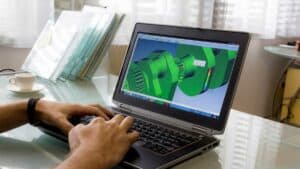

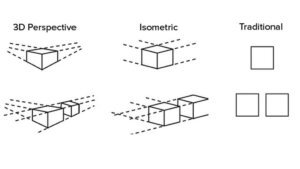
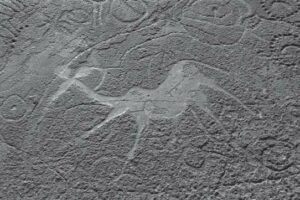
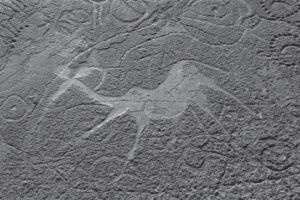

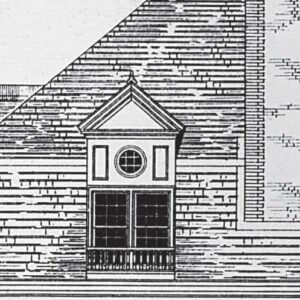
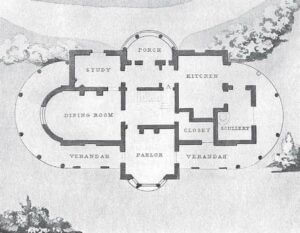
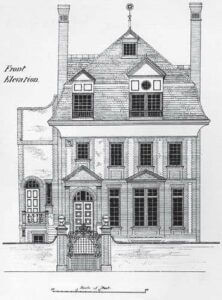
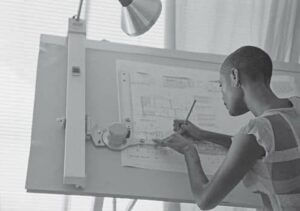

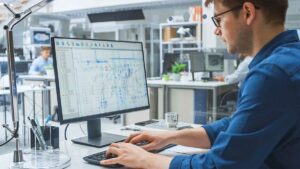
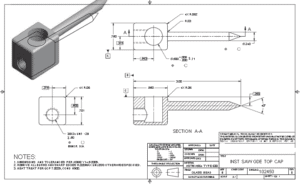

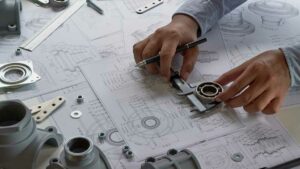
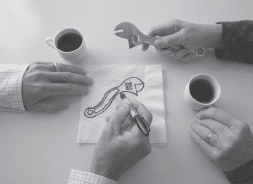

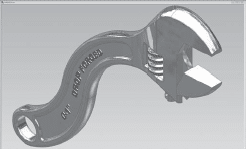
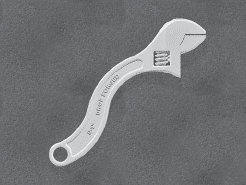
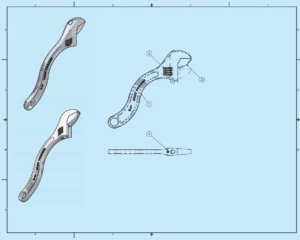 By the next afternoon, the drafter completes the set of working drawings shown in Figure and sends the drawings to the manufacturing department to manufacture and assemble the new product. The manufacturing department needs lead time to design and make the forging dies required to reproduce the parts. Lead time is the time interval between the initiation and the completion of a production process. Forging is the process of shaping malleable metals by hammering or pressing between dies that duplicate the desired shape. The hand-tool company is small, so the drafter is also responsible for creating catalogue art and copy for marketing the product.
By the next afternoon, the drafter completes the set of working drawings shown in Figure and sends the drawings to the manufacturing department to manufacture and assemble the new product. The manufacturing department needs lead time to design and make the forging dies required to reproduce the parts. Lead time is the time interval between the initiation and the completion of a production process. Forging is the process of shaping malleable metals by hammering or pressing between dies that duplicate the desired shape. The hand-tool company is small, so the drafter is also responsible for creating catalogue art and copy for marketing the product.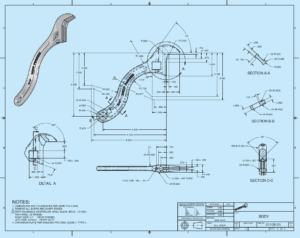 Assembly Drawings and Parts List & Detail drawing of the new wrench body part
Assembly Drawings and Parts List & Detail drawing of the new wrench body part Detail drawing of the new wrench JAW part.
Detail drawing of the new wrench JAW part.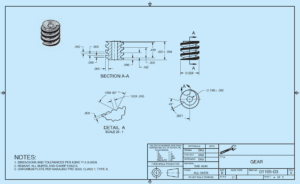 Detail drawing of the new wrench GEAR part.
Detail drawing of the new wrench GEAR part. Detail drawing of the new wrench PIN part.
Detail drawing of the new wrench PIN part.

